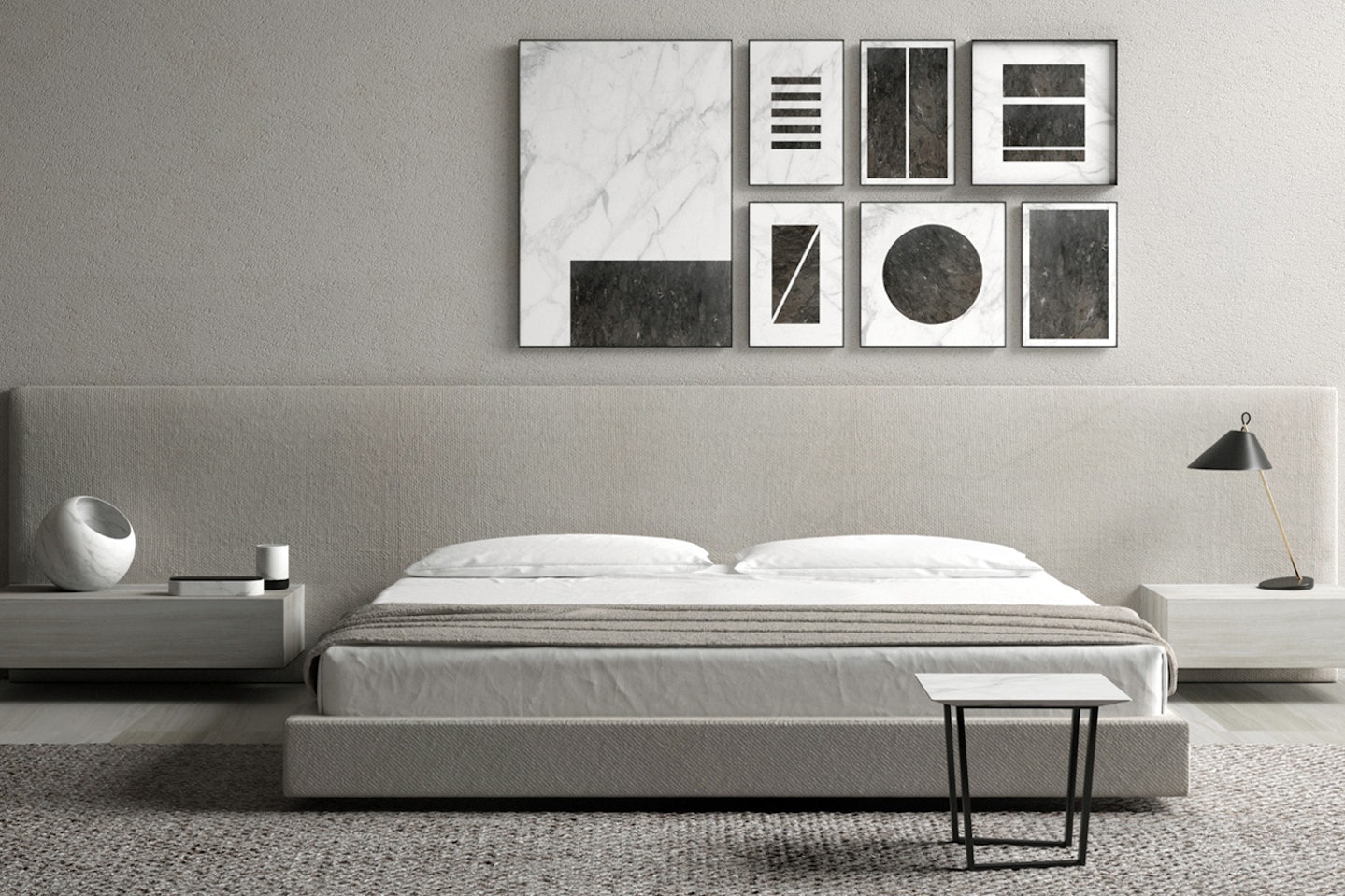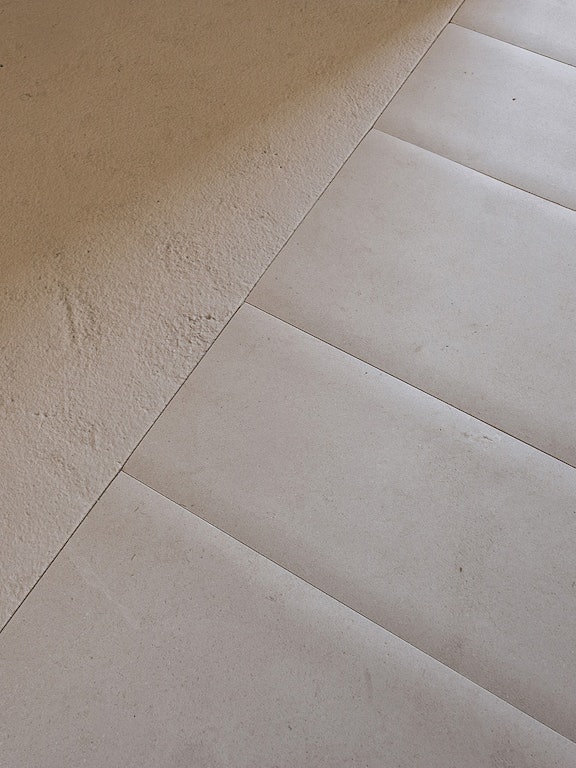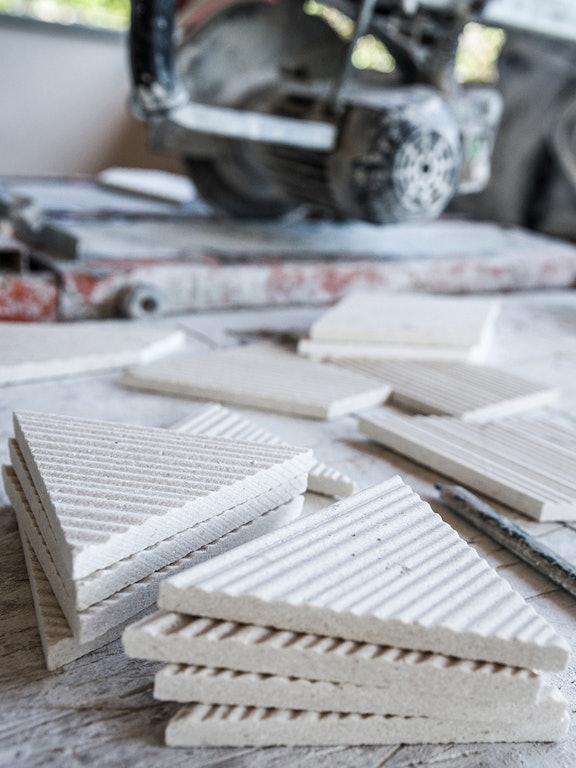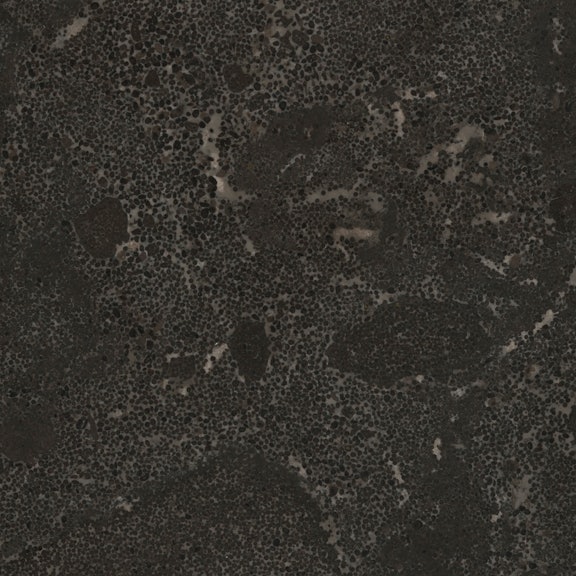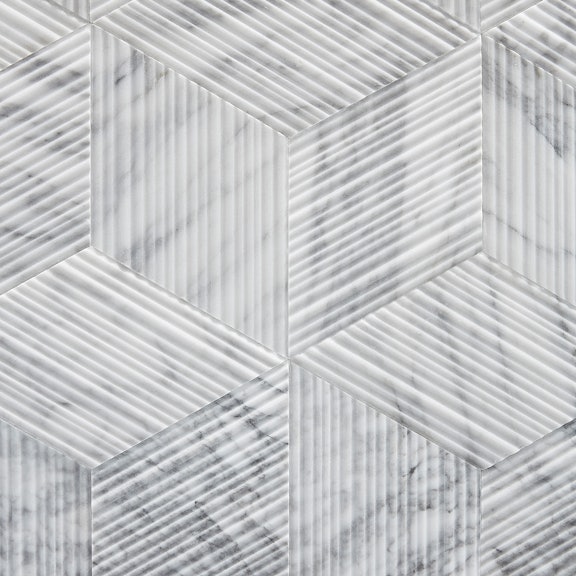The 6 main types of natural stone finishes
03.2022
Discover the 6 main finishes and techniques that are universally used for transforming natural stone into architectural and décor elements
The 6 main types of natural stone finishes
While we are known for producing innovative designer stone textures such as Romboo, Stone Parquet and Lithoverde®, our world-first recycled product, there are 6 main generic finishes that are applied to natural stone. Each dramatically changes the final effect and feel of a material that is extremely versatile, one of the many reasons it is so widely used in architecture and interior design.
Depending on the type of application chosen, stone takes on a certain look which can range from a so-called silk effect to a rustic, almost crude-looking appearance. In short, each of the various techniques creates a finish that modifies not only the visual impact, but also its usability and performance.
In this article, we take a look at the 6 principal generic finishes used for natural stone.
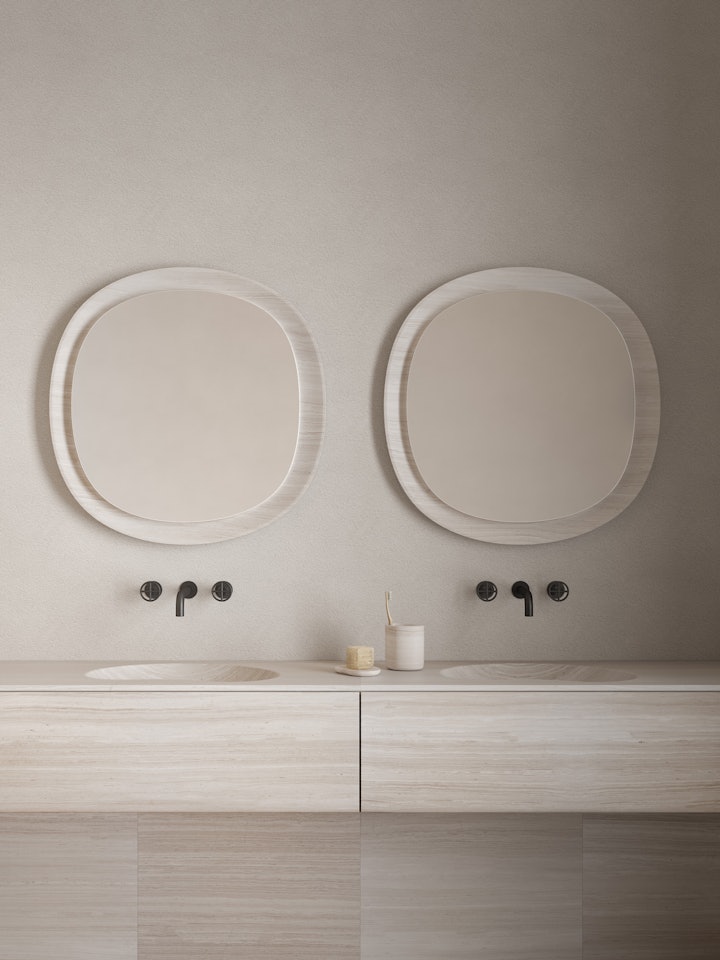
Honed finish
Honed is the most classic of finishes for marble, limestone and most other types of natural stone. The effect is a smooth, matt surface which can range from dull to a light sheen but stops short of being shiny.
The stone is worked from its natural state, by first eliminating any surface irregularities through the process of calibration, then continuing until you reach the level of matt or shine you are looking for, from smooth to matt to polished. The longer you work it, the glossier it tends to become. At Salvatori, we tend to stop before it reaches the polished stage, because we believe a honed effect is more understated, elegant and contemporary.
It also results in a natural look which reflects the light and brings out the intrinsic characteristics of the stone, making it perfect for discreet yet luxurious elements of design from tables, bathtubs, basins and home accessories to countertops, walls and floors. Because of the level of abrasion on its surface, it tends to lose porosity, making it a practical and hardwearing choice.
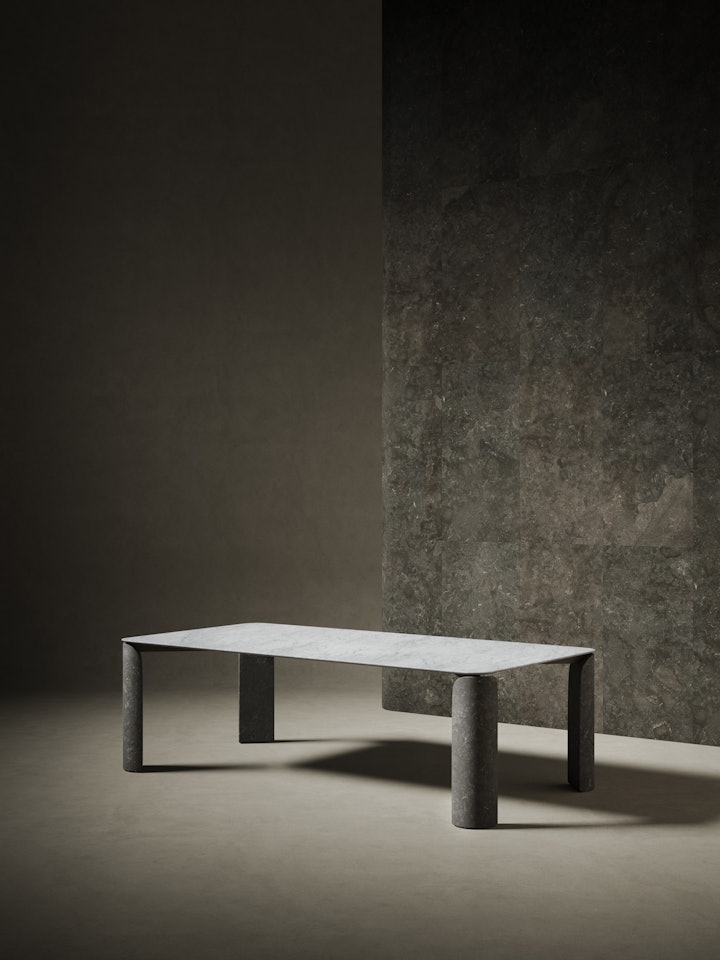
Sandblasted stone finish
Sandblasted stone takes on a lovely textured aspect and, in some cases, can even feel velvety to the touch. Essentially, the process smooths away any roughness and blemishes and in doing so, subdues the colour so that it becomes lighter, uniform and more delicate.
As the name suggests, sand and water are applied at high pressure to the surface to blast away imperfections, creating a smooth yet slight granular effect. This is an important characteristic of sandblasted stone, because it renders it slip-resistant, making it idea for flooring and wet zones. It is for this reason that we also offer sandblasted slats as one of the options in our Filo shower tray range.
While the procedure used is, by its very nature, somewhat “aggressive”, the intrinsic properties of the stone remain intact. In some cases, they are even highlighted, meaning the stone becomes more versatile because the surface becomes slightly rough and the nuances of colour are brought out. Our Taula tables by Patricia Urquiola and Span outdoor furniture range by John Pawson are the perfect examples of the how an element in sandblasted stone adds interest and texture.
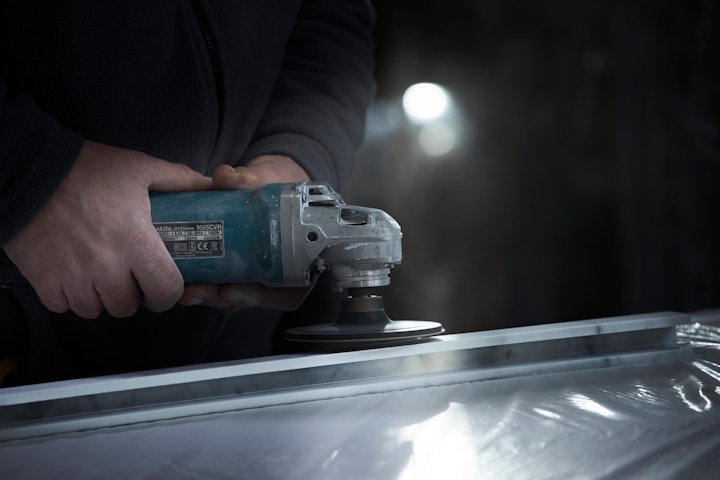
Brushed natural stone
Brushing is a relatively recent stone finishing technique, designed to highlight certain characteristics to create an aged effect. It is obtained by applying brush-like tools to the surface.
It is often described as silky because of its soft, tactile feel which can conjure up the idea of centuries of wear, inspired by the special alchemy created by the combination of regal stone and the softness lent by the brushing technique.
This finish lends a harmonious, slightly wavy textile-like effect that is extremely compact and pleasurable to touch. Brushing the stone adds an extra dimension in the way it suggests the history within it, and traditions passed through generations, making it particularly suitable for more rustic or retro environments.
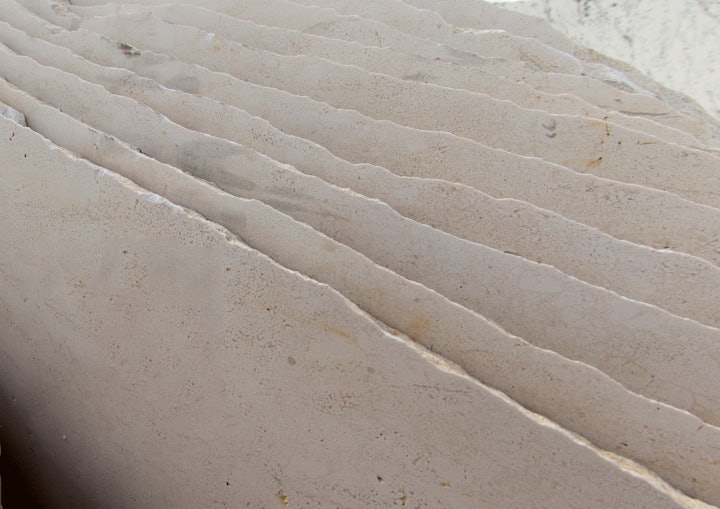
The split face technique
A split face stone finish is obtained by a surprisingly simple mechanical action on the geological structure of the material. This technique can be carried out on any type of natural stone and is generally considered the most rustic and natural of all types of finishes.
Irregular, rugged and uneven to the touch, this finish, which was invented by Salvatori in the 1950s, plays on the intrinsic propensity of a slab of stone to split in a certain direction so that the natural surface is exposed in all its glory.
If you are a fan of the rustic look, split face is an excellent solution for walls, as it lends that authentic natural feel, whilst the variation in colour creates interest and warmth. With its wide range of patterns and high level of resistance, it is a versatile finish, which also combines well with other materials.
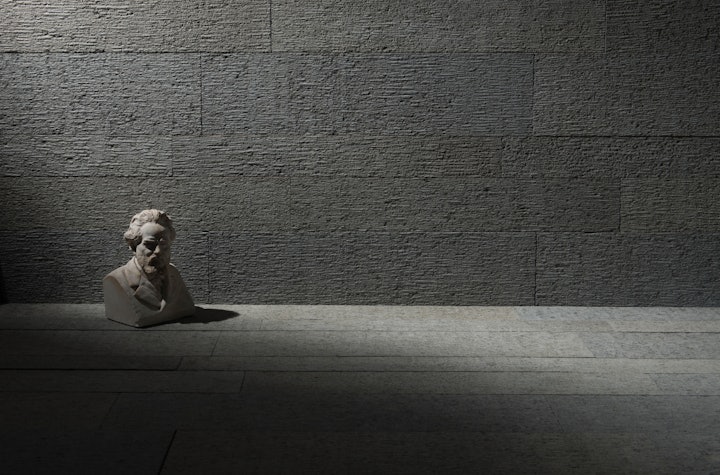
Bush-hammered natural stone
When we talk about bush-hammered stone, we are referring to a technique based on applying a level of force that results in a chiselled surface. The tool used to achieve this effect is a bush hammer, featuring thick sprig-like points that create indents on the stone.
As you can easily imagine, it produces significant stress on the material and as such, the slabs used are thicker than normal, so as to withstand the blows inflicted on them. Due to the impact, the edges will generally not be hammered and therefore remain smooth.
One of the oldest processes for working stone, bush hammering creates a rustic, sculpted look, with an uneven surface. Any imperfections or tonal variations are minimised or entirely eliminated. With its slip-resistant properties, this finish is particularly suited to architectural elements such as flooring and stairs.
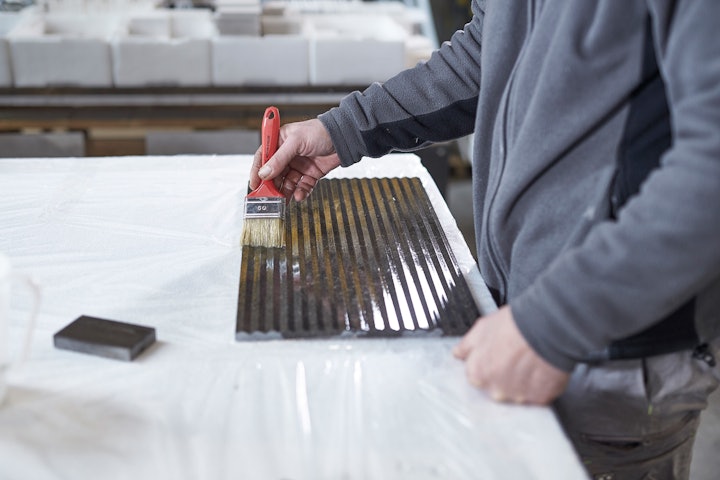
Polished natural stone finish
As we explained above, like honed stone, a polished effect is smooth and uniform, but here it is worked to a glossy finish.
Often associated with marble, it can be applied to other stones, and because the surface is worked so intensely through the abrasion process, it reaches low porosity, helping to make it extremely resistant, particularly when it is treated with a protective sealant. On the downside however, any scratches tend to become highly visible.
Polished marble represents luxury, however, as we said above, our preference is for the more subdued appearance of a honed finish which perhaps could be said to suggest a more discreet form of luxury.
There is no machine that can decide at which point a piece of stone reaches each of the finishes we have describe above. Instead, this is where the human touch, experience and an eye for aesthetics come into play, elements Salvatori has been developing and nurturing for over 70 years.
While we provide these universal finishes, we also love to innovate with natural stone. It is already a wonderful material, so we simply try to give it a surprising twist to create elegant textures for walls and floors.
We invite you to discover our world of textures, many of which have been developed together with renowned designers such as Piero Lissoni, Kengo Kuma and Elisa Ossino. And, if you have any questions or would like a complimentary design consultation, please get in touch. We will be delighted to assist.
